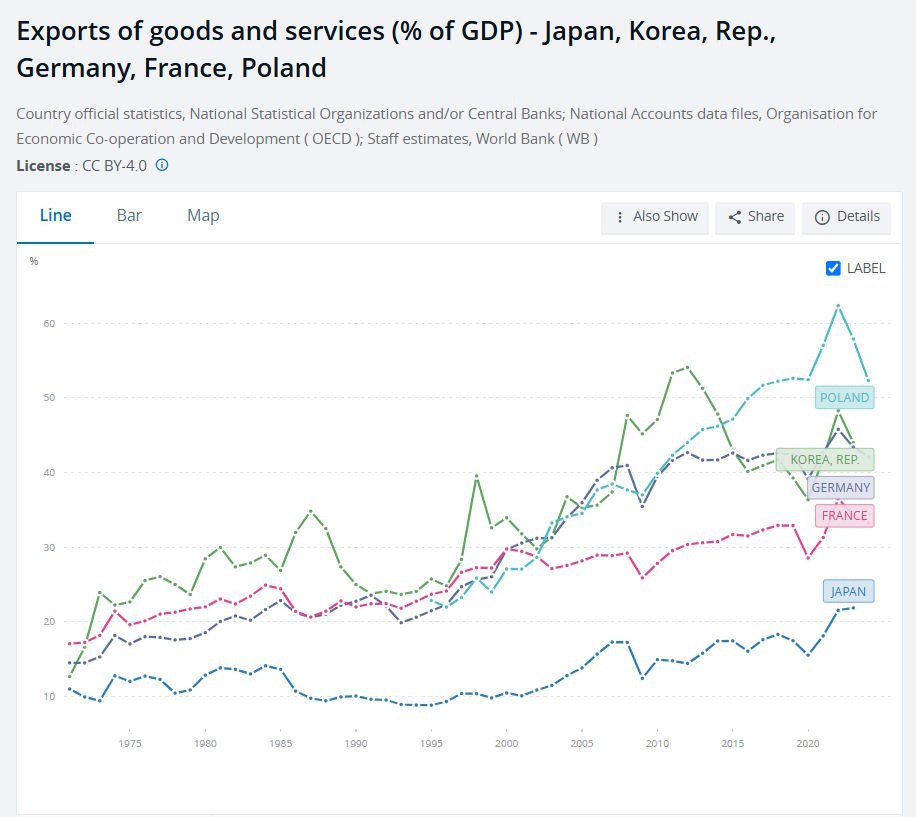Over the last ten years, the European economy has undergone certain changes. Germany, long seen as the undisputed leader of the export model, began to experience an industrial crisis, energy constraints and declining competitiveness. South Korea, up until recently one of the supposed examples of a high-tech export economy, reached its limit for growth. In this light, Poland has become an unexpected leader. Already, this country’s exports of goods and services comprise about half of its gross domestic product. As a result, Poland is among the most export-oriented economies in the world, outranking South Korea, Germany and even more so France and Japan.

This result did not come about by chance. In recent years, Warsaw has focused on manufacturing and attracting investment. The Polish government has offered businesses conditions that have made the country a kind of European magnet for capital: tax preferences, the development of industrial zones and the simplification of mechanisms for setting up businesses. Instead of replacing industry with service sectors, Poland has consciously maintained its focus on physical production. Today, Poland is involved in the creation of finished products and exports not only raw materials or semi-finished products, but also electronics, automotive components, mechanical engineering equipment and IT services.
Poland’s energy decision was also an important factor. Warsaw refused to sacrifice industry for climate initiatives. Coal-based energy, which ensures low and predictable energy prices, remains in place, while liquefied gas terminals are being developed in parallel, reducing dependence on external suppliers. Affordable energy has become a competitive advantage over Germany, where industry is being destroyed in part by the climate agenda.
If the trend continues, Poland could become the new industrial centre of Europe.



